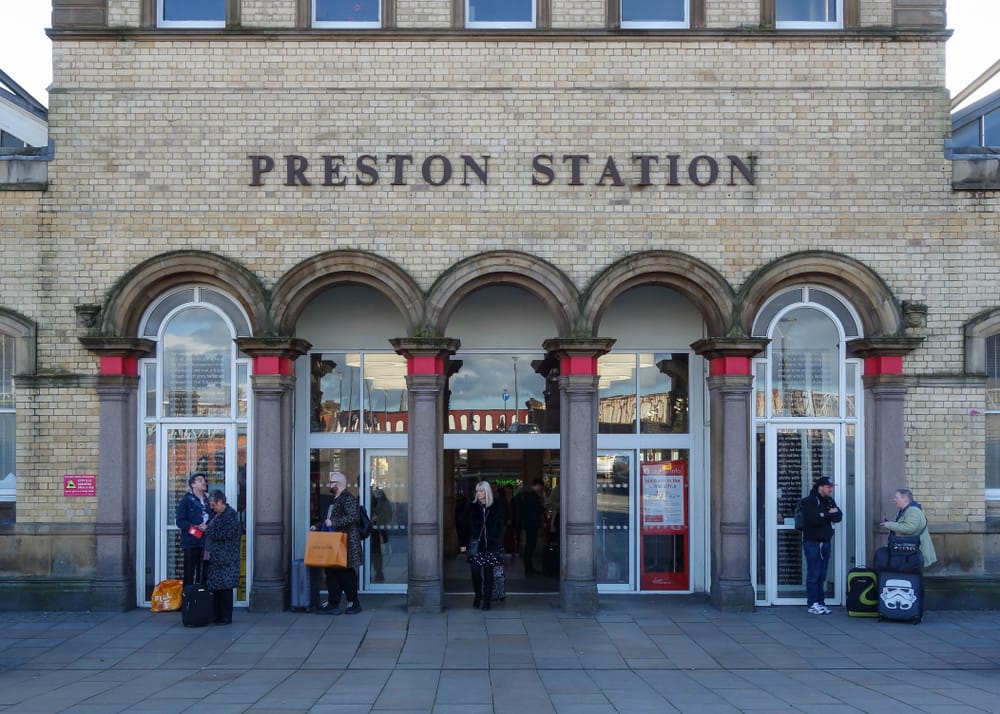One of the best ways to learn about the heritage of any city is to explore the Blue Plaque Trail. These are markers installed on buildings to commemorate a link between that location and a notable person, event, or historical significance, and Preston has plenty to see. So much so, that a Blue Plaque Trail has been produced. This self-guided walking route highlights some of the most influential people and places in Preston, and covers approximately 1.8 miles. The trail begins on Fylde Road near The Ferret and concludes in the elegant surroundings of Winckley Square. So what do you need to know about exploring Preston’s Blue Plaque Trail? And why should you take a look when you’re in the area?
Celebrate Preston’s historic figures on the Blue Plaque Trail
Along the route, you will find a series of blue plaques commemorating individuals who played a significant role locally, nationally, or internationally. These include:
- Sir Richard Arkwright: Recognised as a pioneer of the Industrial Revolution, Arkwright is celebrated for his groundbreaking invention of the water frame when living in Preston.
- Benjamin Franklin: The American statesman is believed to have spent time in Preston during his travels, a fact noted with a plaque on Friargate.
- Edith Rigby: One of Lancashire’s most notable suffragettes, Rigby’s former home is acknowledged for her contribution to the women’s rights movement.
- Joseph Livesey: A leading figure in the temperance movement, Livesey is commemorated for his social and philanthropic work.
- Edmund Robert Harris: Founder of the Harris Museum and Library, whose legacy continues to shape Preston’s cultural life.
- Robert W. Service: The poet and writer, often associated with the Yukon, was born in Preston and is remembered along the route.
- Francis Thompson: A Victorian poet of national reputation, born on Winckley Street, where a plaque now marks the spot.
Exploring Preston’s Blue Plaque trail
The trail begins outside The Ferret on Fylde Road and weaves through central Preston, guiding you past key historical locations. It is designed to be accessible, with mostly level surfaces and some gentle gradients, making it suitable for wheelchairs and pushchairs.
Each stop offers an opportunity to pause and reflect on the achievements of those commemorated. The walk concludes in Winckley Square, a beautifully landscaped Georgian square that remains one of Preston’s most attractive green spaces.
Why choose the Blue Plaque Trail?
This route provides an ideal way to experience Preston’s history in a concise, manageable format. Some key benefits include:
- Accessibility: The trail is suitable for all ages and abilities, including those using wheelchairs or pushchairs.
- Convenience: At under two miles, it is perfect for visitors who wish to explore the city’s heritage within a short timeframe.
- Insight: The plaques tell the stories of individuals whose lives and work had a lasting impact on Preston and beyond.
Additional heritage experiences
If you would like to extend your visit, there are several other heritage walks and attractions in Preston. These include:
- The Preston City Heritage Trail: A shorter, one-mile route starting from the bus station.
- Winckley Square and Avenham & Miller Parks: Ideal for a relaxing stroll following the trail.
- Guided Tours: Themed tours, including those focusing on Winckley Square, statues, and historical events such as the 1715 Jacobite Rising.
Exploring Preston’s Blue Plaque Trail offers an engaging way to discover Preston’s heritage at your own pace. Whether you are a local resident or a first-time visitor, this walk provides an accessible and informative introduction to the city’s history and the people who helped shape it.
Choose the No.10 Preston Hotel for your stay
For luxury and comfort on your trip to Preston, choose the No.10 Preston Hotel. With a fantastic city centre location, our hotel boasts top quality apartments for a great night’s sleep, and a relaxing retreat. Why not take a look at our rooms and availability today?

